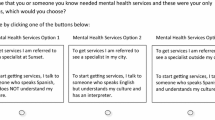Abstract
Conventionally, it has been accepted that an accurate understanding of community views on health topics can only come directly from community members. Yet, even as the need for this data has been increased by managed care, the methods of gathering it from community members remain costly and impractical for most busy practices or communities. This case study was conducted to determine whether well- informed health professionals can accurately and less expensively convey community views on health topics. In a low-income urban community, using a standard set of open-ended questions, focus groups and telephone and mail surveys were used to gather qualitative data from community residents and patients. Extended interviews and key informant surveys were used to gather similar data from health professionals. Data obtained from both sets of respondents were compared for content and logistics of collection. Overall, responses from the two groups had similar content but differing emphases. Community residents tended to emphasize socioeconomic determinants of health and everyday life concerns, while health care workers tended to emphasize the process of care. However, these perspectives were shared across the groups, as was an emphasis on the need for education with regard to community health concerns. The most striking difference between the groups was the community resources each group identified. As expected, costs for the health care worker approaches were less expensive. Findings from this case study suggest limited situations in which health care workers can adequately convey community views. In other situations, the different perspectives of each group can be complementary. Regardless of their role in qualitative data gathering, there remain important roles for community members in planning and decision-making regarding their health care.
Similar content being viewed by others
REFERENCES
Williams R, Snider R, Ryan M. A key informant “tree” as a tool for Community Oriented Primary Care. Fam Prac Res J 1994;14:277-84.
Williams RL, Crabtree BF, O'Brien C, Zyzanski SJ, Gilchrist VJ. Practical “tools” for qualitative COPC community assessment. Fam Med 1999;31:488-94.
Williams RL, Jaén CJ. Tools for Community Oriented Primary Care: Use of key informant trees in 11 practices. J Natl Med Assoc 2000;92:1-7.
Crabtree BF, Miller W, eds: Doing Qualitative Research, 2nd Ed. Thousand Oaks, CA: Sage, 1999.
Neuber KA, Atkins WT, Jacobson JA, Reuterman NA. Needs Assessment: A Model for Community Planning. Newbury Park, CA: Sage, 1980.
Soriano FI. Conducting Needs Assessments: A Multidisciplinary Approach. Thousand Oaks, CA: Sage, 1995.
Witkin BR, Altschuld JW. Planning and Conducting Needs Assessment: A Practical Guide. Thousand Oaks, CA: Sage, 1995.
Goldsmith JC, Goran MJ, Nackel JG. Managed care comes of age. Healthcare Forum 1995;Sept/ Oct:15-23.
Rundall TG, Schauffler HH. Health promotion and disease prevention in integrated delivery systems: the role of market forces. Am J Prev Med 1997;13:244-50.
Blumenthal D, Kilo CM. A report card on continuous quality improvement. Milbank Q. 1998;76: 625-48, 511.
Author information
Authors and Affiliations
Corresponding author
Rights and permissions
About this article
Cite this article
Williams, R.L., Yanoshik, K. Can You Do a Community Assessment Without Talking to the Community?. Journal of Community Health 26, 233–247 (2001). https://doi.org/10.1023/A:1010390610335
Issue Date:
DOI: https://doi.org/10.1023/A:1010390610335




